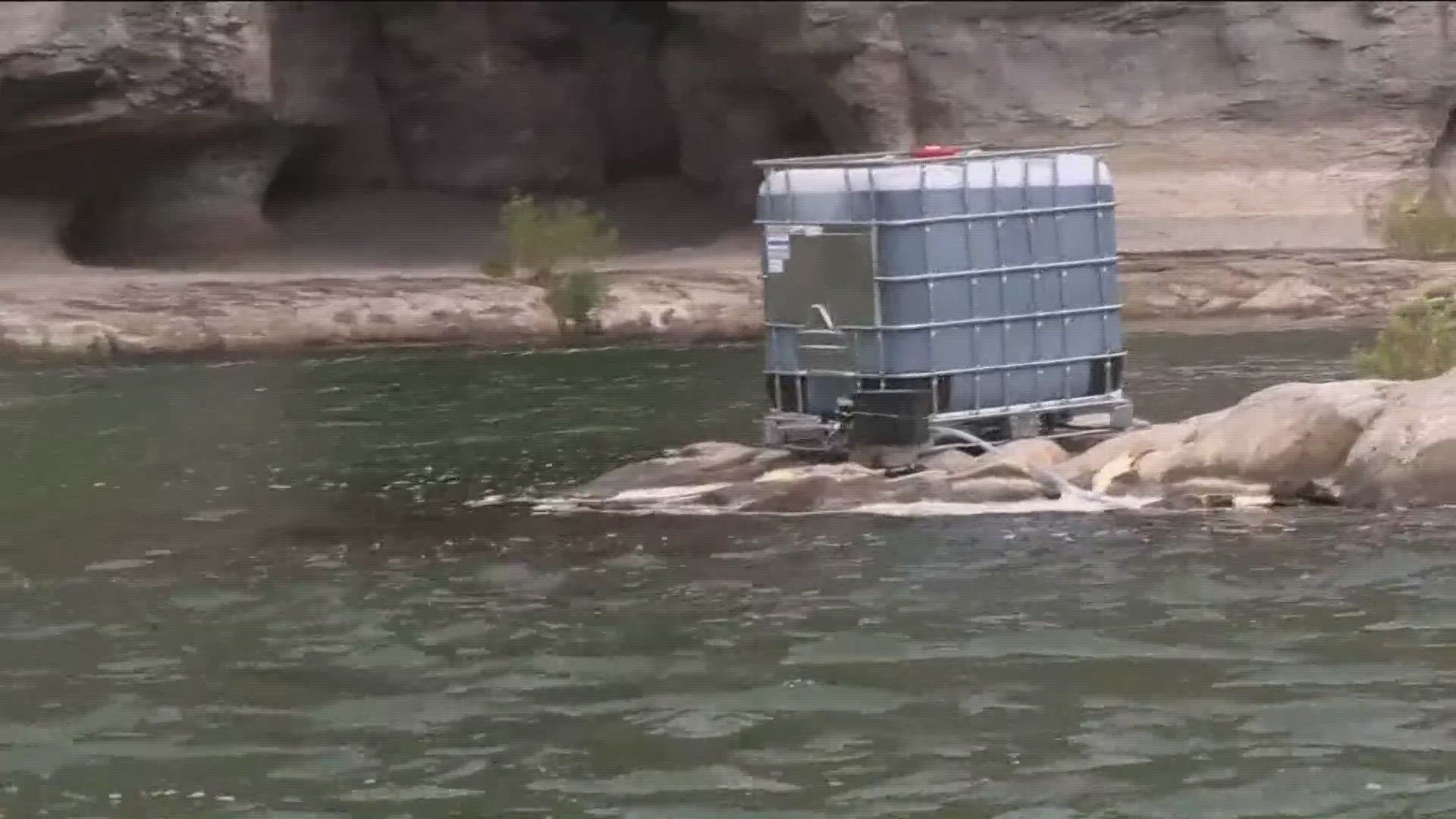TWIN FALLS, Idaho — Crews are on the Snake River working to treat and eradicate quagga mussels. It has been just over two weeks since the invasive mussels were found in a section of the river near Twin Falls.
Since then, the Idaho State Department of Agriculture (ISDA) has done extensive sampling around the mid-Snake River, finding veligers - the larval form of the mussels - between the Twin Falls Dam area and Centennial Waterfront Park. A plume with an adult quagga mussel was also found near Shoshone Falls.
Crews are working to deploy containers full of a copper-based formulation called "Natrix" as a treatment to eradicate the mussels.
The ISDA says they are acting fast and aggressively to stop an issue that has the potential to irreparably impact Idaho's waterways.
"We know based on data from other states just how expensive quagga mussels are," ISDA Director Chanel Tewalt said. "The difference between Idaho and other states, and really the Pacific Northwest, is how much we also depend on our water for hydropower generation and irrigation."
Metered boxes with the copper-based treatment have been placed at key mix points along the Snake River from the Twin Falls Damn to Centennial Waterfront Park. The ISDA evaluated each section of the river where a box was placed for average CFS, PH, and depth - to ensure a consistent treatment flow rate of 1 part per million (ppm).
Natrix is a formulation labeled and approved by the EPA, and similar copper-based products have been used in Idaho for mussel, fish, algae and plant control.
The quagga mussel treatment will take place over 10 days, until October 13. The copper-based formula is expected to break down as it moves downstream.
"We expect from Centennial Park, a 16 mile dissipation area where the product is going to - due to macrophyte growth, algae and water flow - dissipate downriver to a point where it's going to reach background levels," Tewalt said.
The treatment is not expected to impact any drinking water sources. However, it is expected to kill a significant number of fish, as well as aquatic plants and algae within the treatment area of the Snake River. Idaho Fish and Game has established a benchmark on current fish populations that will be used to help guide future fish restoration efforts.
The section of the Snake River from the Twin Falls Dam to Niagara Springs remains closed as agencies try to stop the "potential crisis."
"We know based on the gravity of what we're dealing with here, we have to throw every tool we have at it - and we have a very finite window to try to be successful," Tewalt said. "But this certainly will cause fish mortality, we've been partnering with Fish and Game to do fish assessments ahead of time. And we want to public to be aware - and for this to be a transparent process. Unfortunately, none of us wanted to be here, but we know if we don't treat - we lose the whole river."
More information about the quagga mussel treatment plan can be found on the Idaho State Department of Agriculture's website.
Watch more Local News:
See the latest news from around the Treasure Valley and the Gem State in our YouTube playlist:
HERE ARE MORE WAYS TO GET NEWS FROM KTVB:
Download the KTVB News Mobile App
Apple iOS: Click here to download
Google Play: Click here to download
Watch news reports for FREE on YouTube: KTVB YouTube channel
Stream Live for FREE on ROKU: Add the channel from the ROKU store or by searching 'KTVB'.
Stream Live for FREE on FIRE TV: Search ‘KTVB’ and click ‘Get’ to download.

